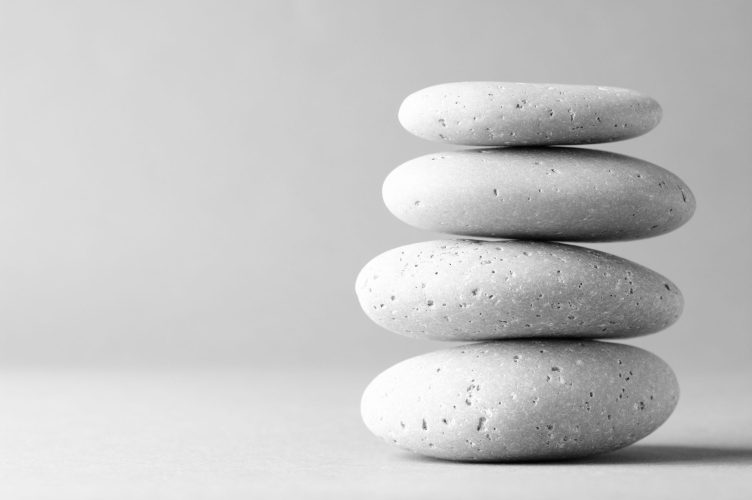She could see it clearly in her imagination, stomping and enjoying its power to destroy everything in its path.
“He is pink and has mean, bloody eyes,” Amy reported during our visualization practice – with glee in her voice, sitting cross-legged, her eyes closed, and face beaming with excitement. “It’s all right,” I assured her. “We can try to befriend him, if we wish.” “No, we cannot!” she joyfully, but firmly, replied, with a sly smile. There was an eerie serenity radiating from her beautiful face as she reported to me the details of the destruction the imaginary elephant created.
“Stay with it, and just observe it,” I offered. “Let’s see what it wants. Do you think, together, we can help it get less angry?” “No,” Amy said, but this time there was a slight hesitation in her voice. “We can always try,” I suggested with a carefree tone of voice. “If we succeed, it will be cool to have a pink elephant friend. If we don’t, it’s not a big deal.”
I could see her serenity starting to evaporate. She was torn between the idea of continuing to enjoy the power of the imaginary, angry animal, or becoming more powerful, herself, by being in control and taming it. It took us some time, about 15 to 20 minutes, of breathing exercises and breath retention, while allowing the subconscious play with the beast of its own creation. Eventually, we turned the destroyer into a kind and loving friend.
Amy is an intelligent, curious, and often rebellious and mischievous child, who was only six years old at the time. Her mom had approached me for help with Amy’s angry outbursts at home. A year later, we talked about the angry pink elephant again. She remembered every detail of the visualization, and with complete clarity. Back then, she had to imagine having a “magic ball” in her hands, while doing a practice known as holding a Qi ball. The elephant, raging with anger, was what she “saw” in her “magic ball.” Within a year of regular breathing exercises, mindfulness practices, and some simple yoga poses, the anger subsided, and the outbursts eventually stopped altogether. Her rebellious and mischievous spirit evolved into curiosity and a delightful sense of humor.
Amy and many other young students like her learn the invaluable lifetime skill of becoming aware of their emotions. Through pranayama, visualization, and mindfulness exercises, they are able to build up their emotional intelligence. Understanding how to be in charge before the emotional storm fully erupts and becomes destructive makes them feel empowered.
However, we often confuse the ability to be in control of the emotion with controlling its external expression. Not showing our angry feelings is not the same as letting them dissolve. With practice, we learn neither to express nor suppress them. Expressing anger creates a habit of giving power to its destructive energy. Suppressing accumulates it and delays the reaction, often with a greater force. We are creatures of habit, and we all have buttons that are easy to push. Once they are pressed, we tend to look for somebody or something to blame.
Instead of trying to fix the external circumstances, it might be more useful to explore our own triggers. “By removing our buttons, we do not eliminate our ethics and values. Rather, we change the automatic and habitual response that so often get us tangled in cycles of anger and conflict with others,” writes Working with Anger author Thubten Chodron. Counting to 100 to conquer anger is a scientific fact. In her book My Stroke of Insight, Neuroanatomist Jill Bolte Taylor, PhD, observes:
“[My anger response] is a programmed response that can be set off automatically. Once triggered, the chemical released by my brain surges through my body and I have a physiological experience. Within 90 seconds of the initial trigger, the chemical component of my anger has completely dissipated from my blood and my automatic response is over. If, however, I remain angry after those 90 seconds have passed, it is because I have chosen to let the circuit continue to run.”
Instead of getting into the loop of internal, angry dialogue, we may choose to practice how to become impartial observers of our inner experience by:
- acknowledging the emotion, without taking sides (“I feel angry now, but that will pass”).
- getting to know our buttons.
- noticing the I (ego) behind our trigger.
- broadening our perspective to include the opposite side’s viewpoint.
- tapping into our innate capacity to forgive.
- practicing gratitude. (It’s impossible to feel grateful and angry at the same time.)
- meditating on compassion.
Remember: 90 seconds is the difference between angry, internal tumult, and peaceful loving kindness – an easy choice to make.
Visualization practice to dissolve anger:
Count slowly to 100 while focusing on your breathing, trying to make the exhale longer. After you finish counting, deeply inhale and imagine that you are holding cool water in your mouth. Hold your breath for as long as it feels safe, then, slowly “drink” the imaginary water in small sips. Notice how the anger dissipates.














